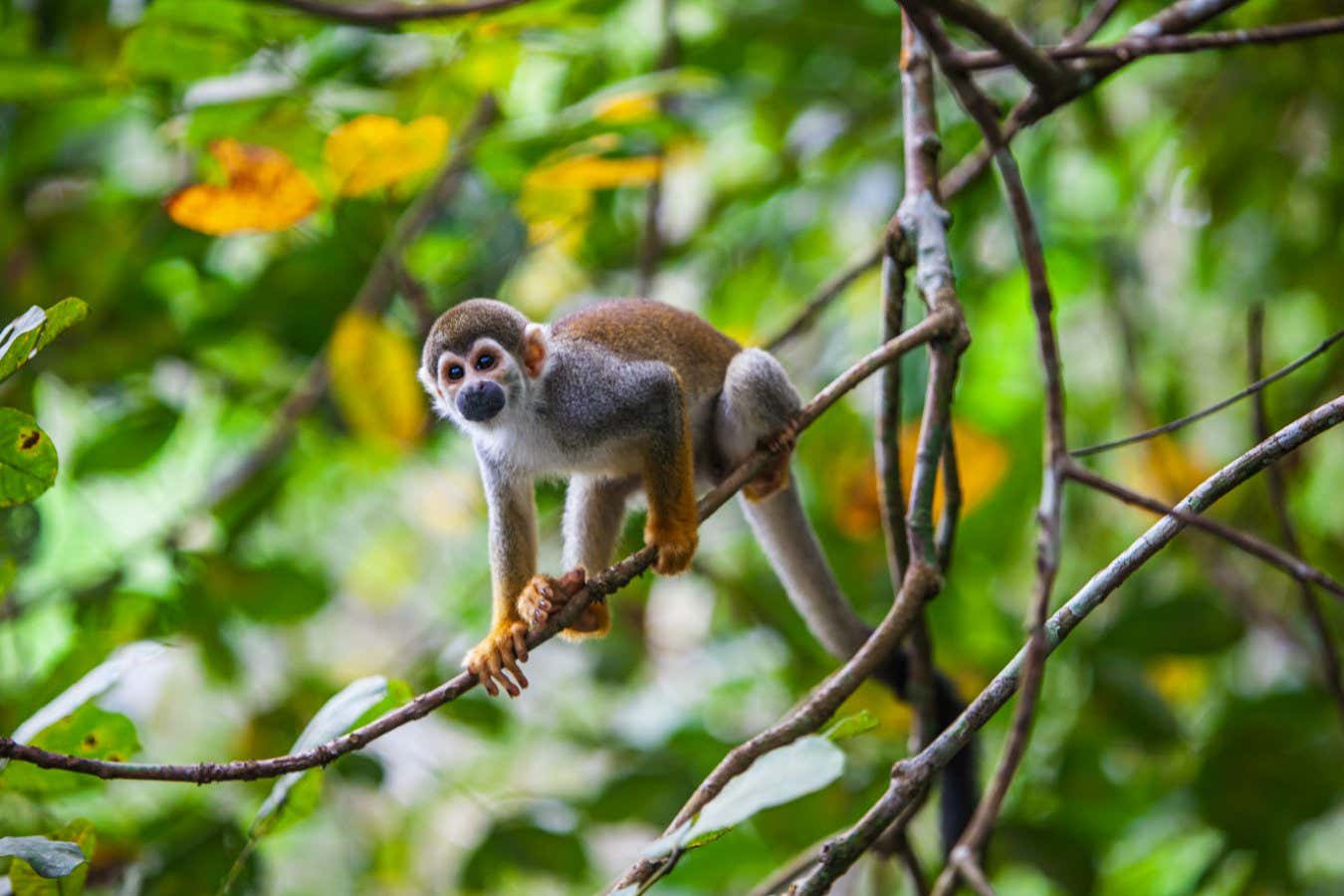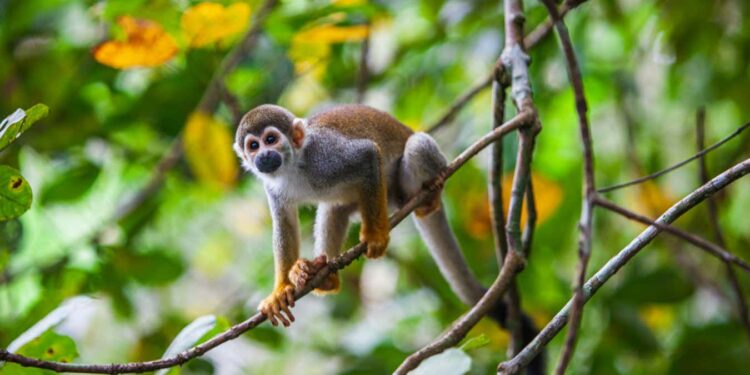
Animals like capuchin monkeys help spread seeds in tropical forests
Carlos Grillo/Getty Images/iStockphoto
Tropical forests populated with a diversity of seed-dispersing animals can accumulate carbon up to four times as fast as fragmented forests where these animals are absent or their movement is restricted.
“This shows a linkage between animal biodiversity loss and a process that exacerbates climate change,” says Evan Fricke at the Massachusetts Institute of Technology. “We’re losing the regrowth potential of tropical forests.”
Animals contain just a tiny fraction of the carbon stored in the environments where they live. But there is increasing recognition their activities can have outsized impacts on their ecosystems’ carbon. One important contribution comes from animals like monkeys, birds and rodents, whose behaviour disperses a great diversity of seeds across a wide area.
Still, “it’s been really hard to translate that to the long-scale processes like the carbon recovery of entire landscapes”, says Fricke.
Fricke and his colleagues analysed more than 3000 plots in tropical forests where trees were growing back – and accumulating carbon – after a disturbance. They then estimated the amount of disruption to the movement and diversity of seed-dispersing animals in each plot. The estimates relied on factors like the amount of forest fragmentation and data from tracked animals.
They found more disruption to the movement of seed dispersers was clearly linked with a lower rate of carbon accumulation. Forests that had the least disruption to their animals’ habits grew four times as fast as the most disrupted ones.
On average, disruptions to seed-dispersing animals’ diversity and movement reduced the amount of carbon the plots could accumulate by half. This means the disruptions had an even larger negative effect than other factors limiting tree regrowth, such as fires or livestock grazing.
Conversely, forests with the least disruption accumulated carbon even faster than monoculture tree plantations. “Natural growth amplified by animals offers a low cost and biodiversity-positive restoration strategy,” says Fricke.
Previously, ecological models suggested seed dispersers could have a substantial effect on carbon. But this study “improves our understanding of how important these animals could be”, says Oswald Schmitz at Yale University. “And it shows that they’re going to be important.”
Topics:
Source link : https://www.newscientist.com/article/2490283-forests-with-robust-animal-populations-store-four-times-as-much-carbon/?utm_campaign=RSS%7CNSNS&utm_source=NSNS&utm_medium=RSS&utm_content=home
Author :
Publish date : 2025-07-29 21:28:00
Copyright for syndicated content belongs to the linked Source.











